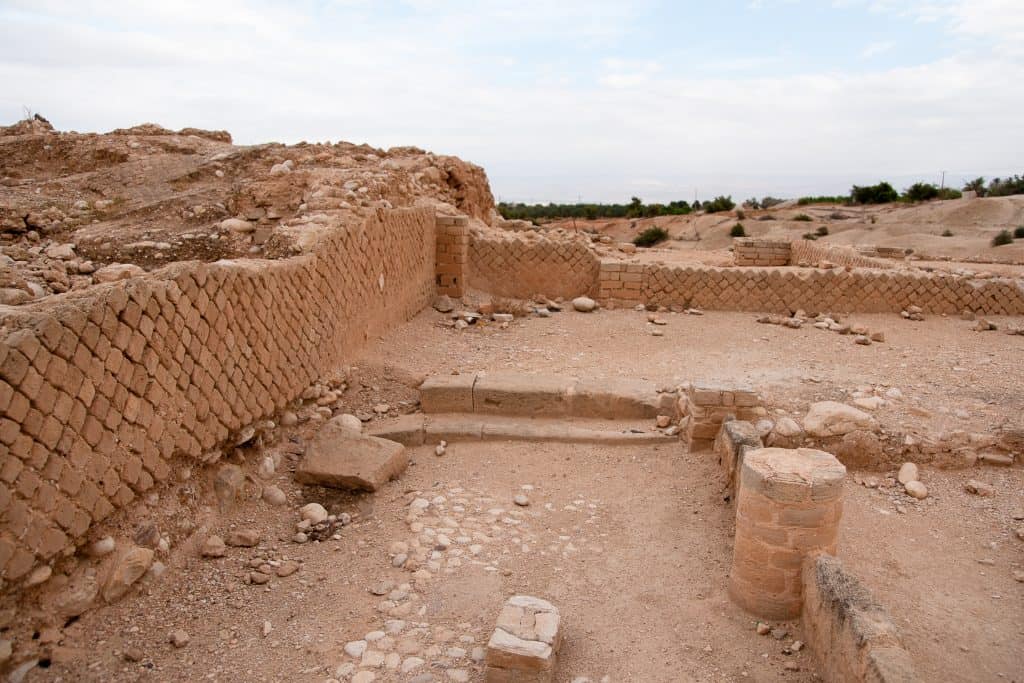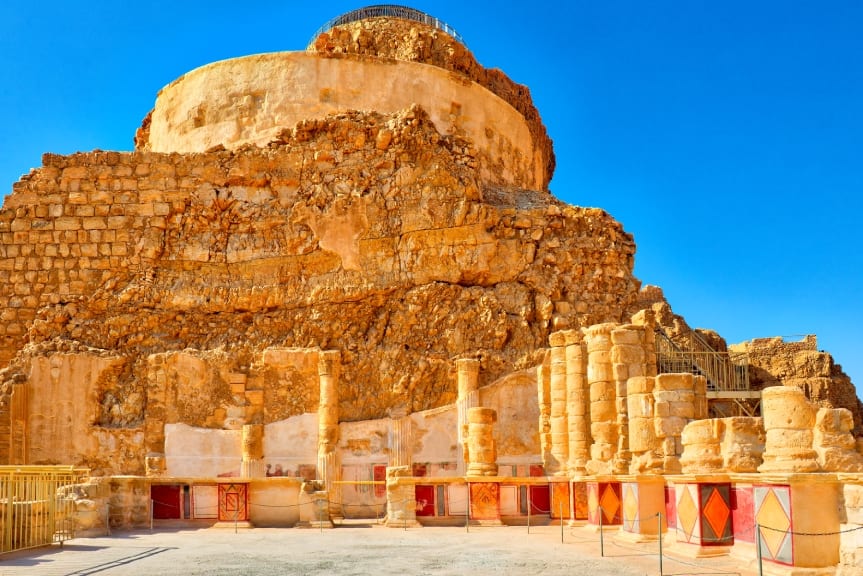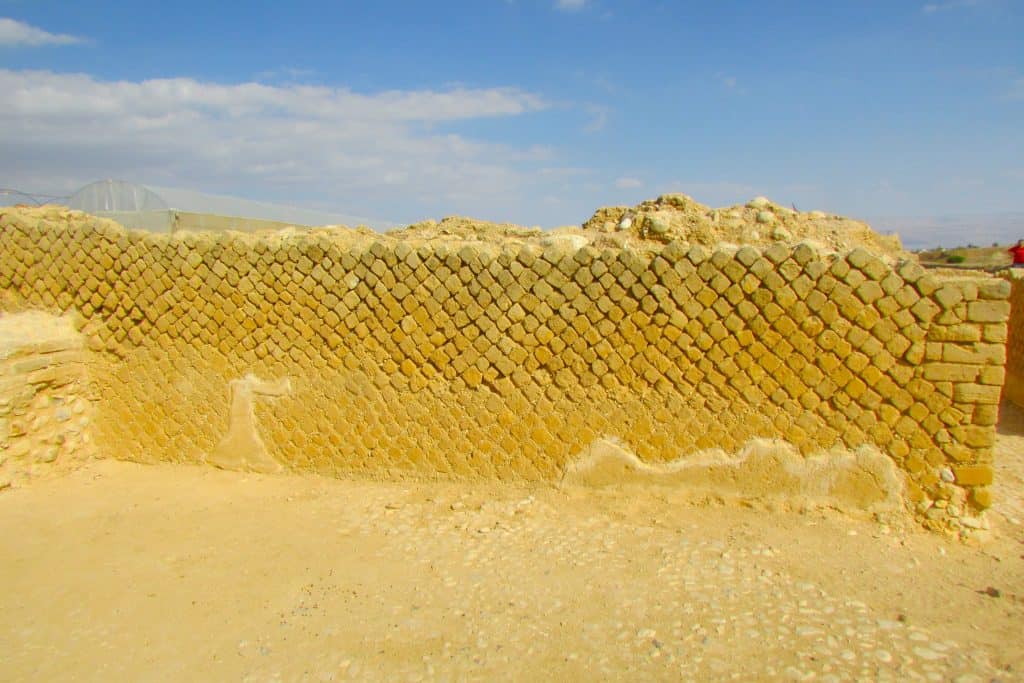Opus Reticulatum is a distinctive type of ancient Roman masonry characterized by diamond-shaped or square bricks arranged in a diagonal pattern. This masonry was used to construct buildings and structures throughout the Roman Empire, including in Israel, during Roman rule.

So Opus Reticulatum (also known as reticulate work) is used for concrete walls in Roman architecture from about the first century BCE to the early first century CE. They were built using small pyramid-shaped tuff, a volcanic stone embedded into a concrete core. Reticulate work was combined with other building materials to provide polychrome coloring and facings to form new techniques.
King Herod's Palaces

During the Roman period in the Land of Israel, Opus Reticulatum was found in minimal use and is known only from three buildings: First, the bathhouse in the third Herodian palace in the Winter Palaces and the King’s Mansion in Jericho (on the northern bank of Wadi Qelt) was built using this method.

Credit: Jacob, CC BY-SA 4.0, via Wikimedia Commons
Moreover, In Jerusalem, a round monument was built in this way to mark a magnificent tomb north of the Damascus Gate. Last, there is a building near the spring of Banias. Roman builders and craftsmen made these buildings for this purpose, especially in Rome. Prof. Ehud Netzer estimated that Herod’s friend Agrippa brought this technique to Israel during his visit to the Land of Israel in 15 BCE.
Last, our primary source about Roman Arhcetuecture is Vitruvius. He was a Roman architect and engineer who lived in the 1st century BCE. He is best known for his treatise “De Architectura,” written in Latin and commonly referred to as “The Ten Books on Architecture.” Furthermore, his work is one of the most influential texts in Western architecture and engineering history, profoundly impacting the development of architectural theory and practice. So I hope you enjoyed this post and are more than welcome to comment.

